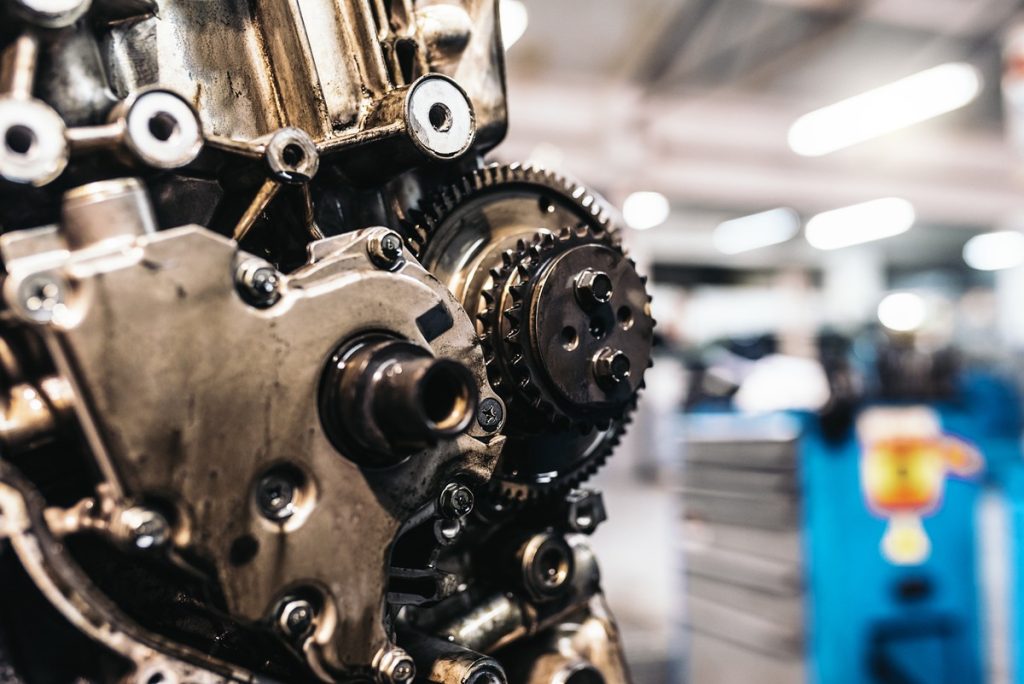The starter motor is a small electric motor that helps start a car. It “turns over” or “cranks” the engine to start when you turn the key in the ignition or press your car’s ignition START button.
Where is the location of the starter motor?
The starter motor is attached to the engine or transmission in most cars. You’ll find it in the front of the car, mounted either on the engine or near its lower end.
How a starter motor works
Your vehicle’s battery provides power to the starter motor, which requires a high electric current.
Part of the starter motor is a starter solenoid, which is an electromagnet that engages the starter motor of an internal combustion engine (ICE) vehicle. The solenoid has one connector and starter control wire and two terminals – one for the positive battery cable and one for the negative (ground) cable that connects to the engine cylinder block or transmission.
The entire system is an electric relay, with battery power sent to the start motor which causes the engine to start.
Can a starter motor run continuously?
When you start your car, the electromagnet engages and pushes out a rod that is attached to a pinion. The pinion meets the flywheel and the starter motor turns. This spins the engine over, sucking in air (as well as fuel).
As the engine turns over, the starter motor disengages and the electromagnet stops. The rod retracts into the starter motor once more, taking the pinion out of contact with the flywheel and preventing potential damage.
So as soon as the engine starts running, the starter motor should disengage and not run continuously. A starter motor does not have a cooling mechanism for continuous use.
Starter motor issues
Because the starter motor receives power from your car’s battery, you must have a charged battery for the starter motor to work. If there isn’t enough battery power, you may experience starter motor issues.
Another factor causing starter motor issues may be that the starter motor cable connections are either corroded or not attached properly. Have a look and see if there are any obvious signs of these issues. Loose wiring to and from the starter can disrupt the connections needed for the starter motor to function.
There are also several other parts of the starter motor, such as the carbon brushes, armature, commutator, plunger, coils, etc that may be creating starter motor problems. Book a car service with us to undergo a complete check of the starer motor.
If the starter motor cranks normally as it should, but the car won’t start, the problem is likely with the engine, not the starter motor.
What does a broken starter motor sound like?
When you go to start your car, if you hear either a single click or no sound at all, there may be a problem with your starter motor.
Another sound to listen out for is a screeching noise when you go to start your car. This could indicate that the starter motor is working, but it’s not turning the engine over properly.
How long does a starter motor last?
This is hard to say, as with most vehicle parts, their lifetime use depends on factors such as how much you drive, in what conditions, how old your vehicle is, and how regularly you have it serviced.
On average, a starter motor should last between 150,000 and 200,000 kms. There is no way of saying how many years this is, as it will depend on how much you drive each year.
Sometimes there may be just an issue with one of the starter motors parts. As we’ve listed above, there are many smaller components that make up the starter motor. Often we can adjust or replace one of these components without needing to fully replace the starter motor.
How often should you change your starter motor?
If your starter motor is consistently failing (i.e. you have regular trouble starting your vehicle), it’s best to replace a faulty starter motor. The labour involved can be quite involved in repairing, so often it’s better to replace it.
You only really need to change your starter motor if it’s not working properly or if it’s showing signs of corrosion or damage. As we’ve mentioned above, you can get quite a lot of mileage from a new starter motor.
What is the cost of replacing a starter motor?
If the starter motor is faulty, it will likely need to be replaced. The range in price is due to the fact that some starter motor replacements are more straightforward than others.
The labour involved in repairing or replacing one can add up. For example, in some vehicles, the intake manifold needs to be removed to get access to the starter motor. This will require a little bit more time.
Because of the complexity of this small but very important part of your vehicle, we do not recommend that you try to fix or replace it yourself.
If you suspect that something is not quite right with your starter motor or your vehicle, get in touch with the experts at Mt Roskill Collision Centre and we can help.
Call us on 0800 227 762 or email [email protected] for professional and friendly car servicing advice
